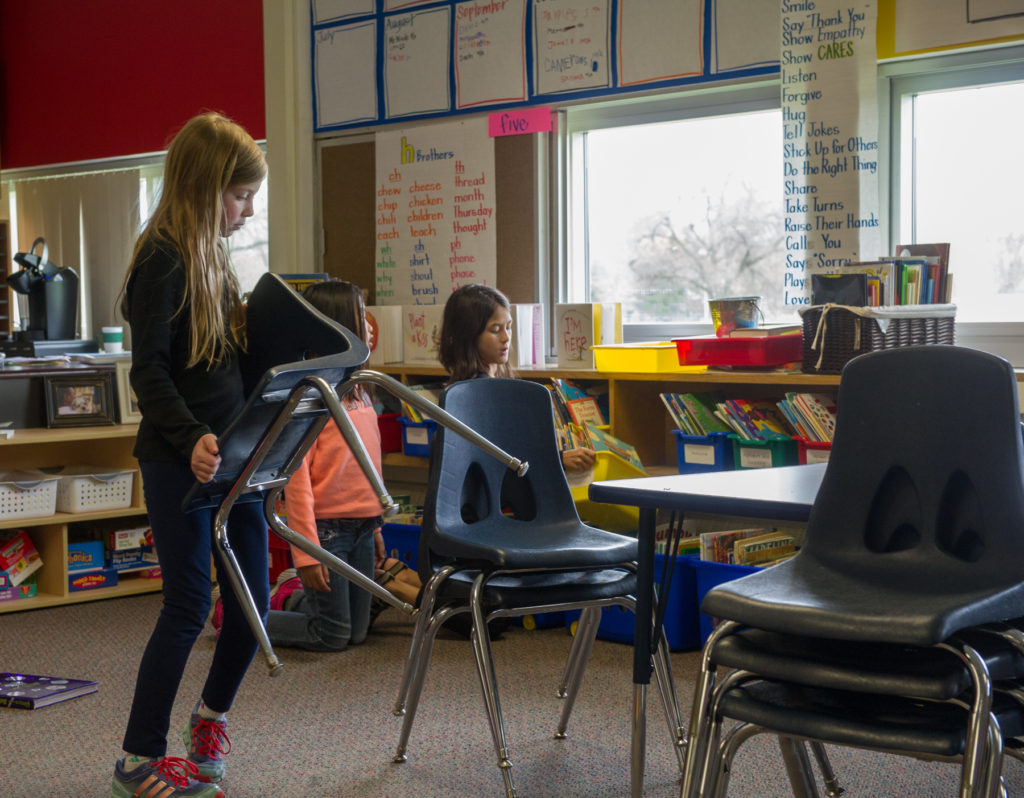Midway through the year can be a productive time to consider your classroom routines. What routines do you regularly use in your classroom? Which are going well? Which still need some work?
Reinforce and Celebrate Success
For routines that are going well, think about how you can share or celebrate those positives in a meaningful way with students. You might make a list on a chart or your whiteboard of all the behaviors students are doing well. You could celebrate with a favorite activity or by singing a familiar song. Or, post a list of all the routines in your day and let the class decide together about which they have been doing well.
To celebrate individual students’ success, you might try writing personal notes. For example:
- “Janis—I notice that you have been working really hard at waiting your turn to speak. That is helping our discussions and encouraging your classmates listen more when you do talk.”
- “Anthony, you have been cleaning up faster and also lining up on time for recess. That helps all of us stay on schedule and get to everything we have planned.”
Whatever you choose, remember to reinforce the positives before moving on to address what has not been working as well.
Revisit and Revise Routines
For those areas of your day that need some work, here are some questions to think about:
- Are your expectations developmentally appropriate, and appropriate for this time of day? (This is a great time of year to revisit Yardsticks!)
- Is the whole class struggling with this time of day, or is it just a few students?
- Could there be a problem in the way you have set up or managed this time of day?
- Are you consistent in the way you manage this time of day?
Depending upon your answers to these questions, you may decide to change some of your routines. You should plan to teach new ways of doing things step-by-step using interactive modeling, just as you did at the beginning of the year. Other routines may just need to be remodeled and practiced again. Here are some tips for how to do that:
- Keep your tone neutral. For instance, “January is a great time for us to go back and make sure we know how to make certain parts of our day go well” instead of “I noticed that we have been doing a bad job with some of our routines, so we’re going to have to practice them again until we get them right.”
- Remodel. Since these are behaviors that you have already modeled and students have already practiced, shorten the modeling process and take into account students’ prior knowledge. For instance, here is what a remodeling of responding to the signal might look like:
- We have so many exciting things to learn in January! I want to make sure we can focus our attention quickly and quietly on whoever is speaking. Let’s take a minute and remind ourselves what it looks like to respond to our signal for quiet. Who remembers what to do when you hear the signal? Quickly collect and chart ideas. If students have omitted any key points, add those.
- Let’s see if I can do all those things. Bryan, will you play the role of the teacher? I’m going to be talking to Maria, and when you ring the chime, I’ll stop and do all the things we mentioned. Everyone else, watch and notice.
- What did you notice? Collect ideas—perhaps check them off the chart as you do so.
- Okay, now it’s your turn. Let’s practice that.
- Wow! You all responded to the signal so quickly, kept your bodies still and focused on me. I’m going to be watching to make sure we keep doing those things so we will make the best use of our time.
This whole process should only take a few minutes to do with students, and the time you spend on planning and reflecting beforehand will be well worth it. Reinforcing positives and revisiting routines that need improvement now will save time later—and make your classroom run more smoothly in the second half of the year!
Margaret Berry Wilson is the author of several books, including: The Language of Learning, Doing Science in Morning Meeting (coauthored with Lara Webb), Interactive Modeling, and Teasing, Tattling, Defiance & More.
